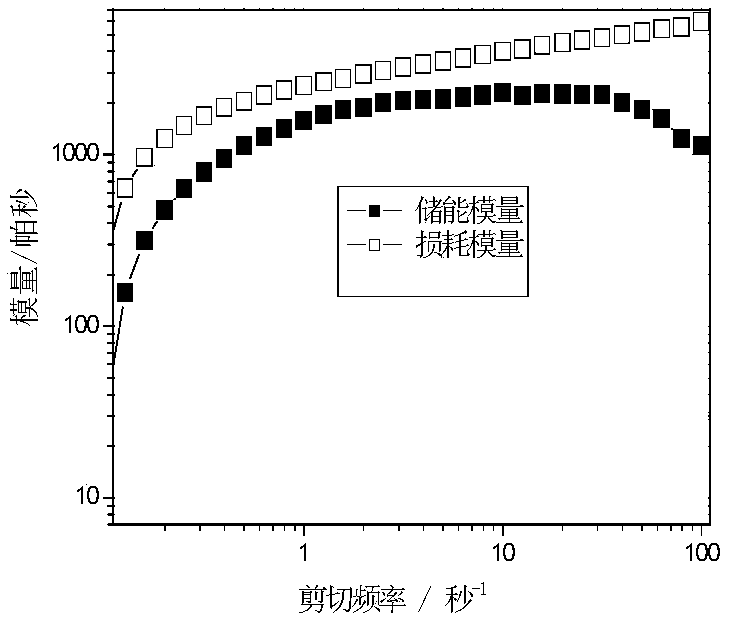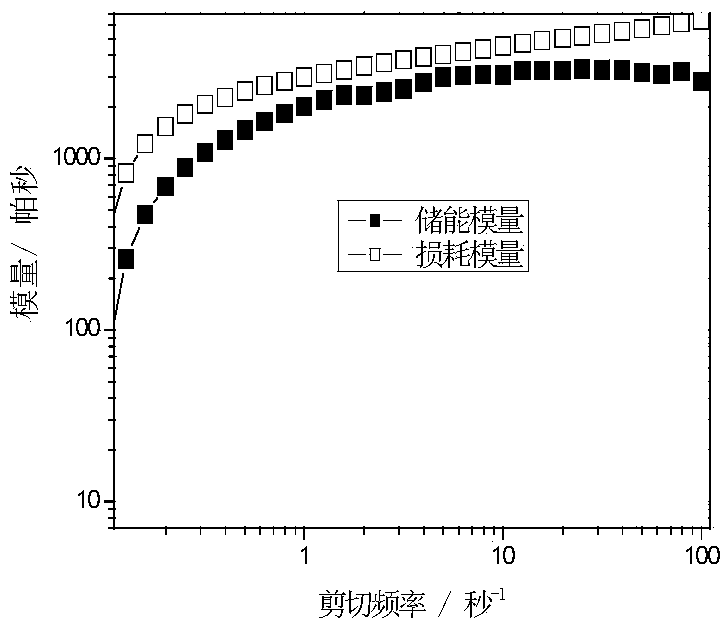Polyacrylonitrile carbon fiber prepared by using waste polyacrylonitrile fiber and preparation method thereof
A technology of polyacrylonitrile carbon fiber and polyacrylonitrile fiber, which is applied in the field of polyacrylonitrile carbon fiber and its preparation, can solve problems such as difficulty in passing and inapplicability, and achieve smooth spinning, reduced consumption, fiber formation and spinnability Good results
- Summary
- Abstract
- Description
- Claims
- Application Information
AI Technical Summary
Problems solved by technology
Method used
Image
Examples
Embodiment 1
[0040] Get certain quality polyacrylonitrile waste silk that adopts dimethyl sulfoxide (DMSO) spinning solvent route, composition analysis finds, in waste silk, contain polyacrylonitrile 27.4%, dimethyl sulfoxide 12.8%, water 59.8% ( Indicates that it is waste silk before washing). Put the above fibers into water at a temperature of 50° C. and soak for 30 mins. The quality of the soaking water is 5 times that of the waste silk. Take it out and let it dry in the air for 3 hours, put it into a vacuum oven with a certain volume and multiple layers of drying racks, control the vacuum degree to be -0.09MPa, and the temperature in the oven is 90°C. In order to ensure the dehydration effect, spread the waste silk on the drying rack as much as possible. After dehydration for 2 hours, take out the waste silk and air it to room temperature, then weigh it. The mass reduction is 66.9% (the water in the waste silk is completely removed, and some dimethyl sulfoxide and water form an azeotr...
Embodiment 2
[0044] Take a certain quality of polyacrylonitrile waste silk that adopts the route of dimethylacetamide (DMAc) spinning solvent, composition analysis finds that the waste silk contains 33.1% of polyacrylonitrile and 66.9% of water (indicating that it is waste silk after washing) . Put the above-mentioned fibers into a vacuum oven with a certain volume and multiple layers of drying racks, control the vacuum degree to -0.05MPa, and the temperature in the oven to 60°C. In order to ensure the dehydration effect, spread the waste silk on the drying rack as much as possible. After dehydration for 8 hours, take out the waste silk and air it to room temperature, then weigh it, and the mass is reduced to 66.9% (moisture in the waste silk is completely removed).
[0045] The sandwich feeding method adds the solvent DMAc and the completely dehydrated waste polyacrylonitrile fiber into the dissolution kettle to ensure that the waste silk is in full contact with the solvent. The waste po...
Embodiment 3
[0048] Get certain quality polyacrylonitrile waste silk that adopts dimethylformamide (DMF) spinning solvent route, composition analysis finds, in waste silk, contain polyacrylonitrile 27.6%, dimethylformamide 12.4%, water 60.0% ( It shows that it is waste silk before washing). Put the above-mentioned fibers into a vacuum oven with a certain volume and multiple layers of drying racks, control the vacuum degree to -0.09MPa, and the temperature in the oven to 90°C. In order to ensure the dehydration effect, spread the waste silk on the drying rack as much as possible. After dehydration for 2 hours, the waste silk was taken out and aired to room temperature, and then weighed. Amide and water form an azeotrope to remove).
[0049]The sandwich feeding method adds the solvent DMF and the completely dehydrated waste polyacrylonitrile fiber into the dissolution kettle to ensure full contact between the waste silk and the solvent. Control the waste polyacrylonitrile fiber to account ...
PUM
| Property | Measurement | Unit |
|---|---|---|
| linear density | aaaaa | aaaaa |
| tensile strength | aaaaa | aaaaa |
| tensile strength | aaaaa | aaaaa |
Abstract
Description
Claims
Application Information
 Login to View More
Login to View More - R&D
- Intellectual Property
- Life Sciences
- Materials
- Tech Scout
- Unparalleled Data Quality
- Higher Quality Content
- 60% Fewer Hallucinations
Browse by: Latest US Patents, China's latest patents, Technical Efficacy Thesaurus, Application Domain, Technology Topic, Popular Technical Reports.
© 2025 PatSnap. All rights reserved.Legal|Privacy policy|Modern Slavery Act Transparency Statement|Sitemap|About US| Contact US: help@patsnap.com



